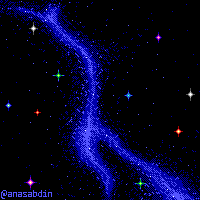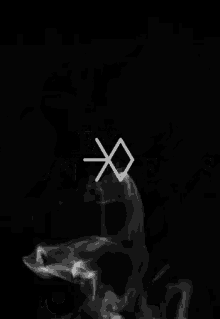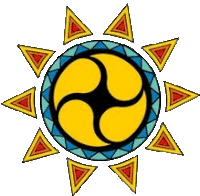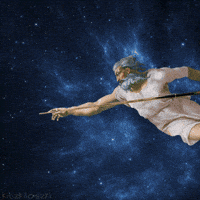01/06/23
Lessons 4671 Sat 7 Jan 2023 EMPOWERED JAMBUDIPA UNIVERSE NOW IS ALL THAT YOU HAVE DO GOOD PURIFY MIND Wise,Intelligent people of All Major religions in the world of ETERNAL,GLORIFIED,FRIENDLY,BENEVOLENT,COMPASSIONATE EMPOWERED JAMBUDIPA UNIVERSE grows vegetables 🥕 🥗 🥬 🥔 🍆 🥜 🎃 🫑 🍅 🧅 🍄 🥗 🥒🌽 🥥 🌵 🍈 & Fruits 🍍 🍊 🥑 🥭 🍇 🍌 🍎 🍉 🍒 🍑 🥝 Plants 🌱in pots 🪴 which tastes the same for all including haters to live like free birds 🦅 to overcome Hunger on Good Earth and SPACE. After getting up at 3:45 AM take bath🧼 and do Buddhists Patanjali Yogic Meditation inhaling and exhaling in all positions of the body. Do Meditative Mindful Swimming from 5 am to 6:30 AM We were in ETERNAL,GLORIFIED,FRIENDLY,BENEVOLENT,COMPASSIONATE EMPOWERED JAMBUDIPA We are in ETERNAL,GLORIFIED,FRIENDLY,BENEVOLENT,COMPASSIONATE EMPOWERED JAMBUDIPA We continue to be in ETERNAL,GLORIFIED,FRIENDLY,BENEVOLENT,COMPASSIONATE EMPOWERED JAMBUDIPA in23) Classical Eternal,Glorified,Friendly,Benevolent,CompassionateCatalan-Català clàssic 24) Classical Eternal,Glorified,Friendly,Benevolent,Compassionate Cebuano-Klase sa Sugbo, 25) Classical Eternal,Glorified,Friendly,Benevolent,Compassionate Chichewa-Chikale cha Chichewa, 26) Classical Eternal,Glorified,Friendly,Benevolent,Compassionate Chinese (Simplified)-古典中文(简体), 27) Classical Eternal,Glorified,Friendly,Benevolent,Compassionate Chinese (Traditional)-古典中文(繁體), 28) Classical Eternal,Glorified,Friendly,Benevolent,Compassionate Corsican-Corsa Corsicana, 29) Classical Eternal,Glorified,Friendly,Benevolent,Compassionate Croatian-Klasična hrvatska, 30) Classical Eternal,Glorified,Friendly,Benevolent,Compassionate Czech-Klasická čeština
Lessons 4671 Sat 7 Jan 2023
EMPOWERED JAMBUDIPA UNIVERSE
NOW IS ALL THAT YOU HAVE
DO GOOD PURIFY MIND
Wise,Intelligent
people of All Major religions in the world of
ETERNAL,GLORIFIED,FRIENDLY,BENEVOLENT,COMPASSIONATE EMPOWERED JAMBUDIPA UNIVERSE
grows vegetables 















 &
&
Fruits 









 Plants
Plants  in pots
in pots  which tastes the same for all including haters to live
which tastes the same for all including haters to live
like free birds  to overcome Hunger on Good Earth and SPACE.
to overcome Hunger on Good Earth and SPACE.
After
getting up at 3:45 AM take bath and do Buddhists Patanjali Yogic
and do Buddhists Patanjali Yogic
Meditation inhaling and exhaling in all positions of the body.
Do Meditative Mindful Swimming from 5 am to 6:30 AM
We were in
ETERNAL,GLORIFIED,FRIENDLY,BENEVOLENT,COMPASSIONATE EMPOWERED JAMBUDIPA
We are in
ETERNAL,GLORIFIED,FRIENDLY,BENEVOLENT,COMPASSIONATE EMPOWERED JAMBUDIPA
We continue to be in
ETERNAL,GLORIFIED,FRIENDLY,BENEVOLENT,COMPASSIONATE EMPOWERED JAMBUDIPA
in23) Classical Eternal,Glorified,Friendly,Benevolent,CompassionateCatalan-Català clàssic
24) Classical Eternal,Glorified,Friendly,Benevolent,Compassionate Cebuano-Klase sa Sugbo,
25) Classical Eternal,Glorified,Friendly,Benevolent,Compassionate Chichewa-Chikale cha Chichewa,
26) Classical Eternal,Glorified,Friendly,Benevolent,Compassionate Chinese (Simplified)-古典中文(简体),
27) Classical Eternal,Glorified,Friendly,Benevolent,Compassionate Chinese (Traditional)-古典中文(繁體),
28) Classical Eternal,Glorified,Friendly,Benevolent,Compassionate Corsican-Corsa Corsicana,
29) Classical Eternal,Glorified,Friendly,Benevolent,Compassionate Croatian-Klasična hrvatska,
30) Classical Eternal,Glorified,Friendly,Benevolent,Compassionate Czech-Klasická čeština










https://duckduckgo.com/?q=Jambudipa%20Universe&iax=images&ia=images&iai=https://www.iskcon-truth.com/bhu-mandala/greater-earth-plane/04000000.png&atb=v354-1










Jagatheesan Chandrasekharan, [06-Jan-2023 at 7:08:12 AM]:
When
a disciple of the noble ones discerns aging & death, the
origination of aging & death, the cessation of aging & death,
and the way of practice leading to the cessation of aging & death,
then he is a person of right view… who has arrived at this true
Dhamma.
“And what is aging & death? What is the origination
of aging & death? What is the cessation of aging & death? What
is the way of practice leading to the cessation of aging & death?
“Whatever
aging, decrepitude, brokenness, graying, wrinkling, decline of
life-force, weakening of the faculties of the various beings in this or
that group of beings, that is called aging. Whatever deceasing, passing
away, breaking up, disappearance, dying, death, completion of time,
break up of the aggregates, casting off of the body, interruption in the
life faculty of the various beings in this or that group of beings,
that is called death. This aging & this death are called aging &
death.
From the origination of birth comes the origination of
aging & death. From the cessation of birth comes the cessation of
aging & death. And the way of practice leading to the cessation of
aging & death is just this very noble eightfold path: right view,
right resolve, right speech, right action, right livelihood, right
effort, right mindfulness, right concentration.
“Now, when a
disciple of the noble ones discerns aging & death, the origination
of aging & death, the cessation of aging & death, and the way of
practice leading to the cessation of aging & death in this way,
when — having entirely abandoned passion-obsession, having abolished
aversion-obsession, having uprooted the view-&-conceit obsession ‘I
am’; having abandoned ignorance & given rise to clear knowing — he
has put an end to suffering & stress right in the here-&-now, it
is to this extent, too, that a disciple of the noble ones is a person
of right view… who has arrived at this true Dhamma.
- MN 9 Sammaditthi Sutta: Right View
https://www.accesstoinsight.org/tipitaka/mn/mn.009.than.html
Jagatheesan Chandrasekharan, [06-Jan-2023 at 10:57:08 AM]:
With
the tranquil mind investigate the meditation subject which is the body,
from the top of the head to the soles of the feet, then back to the
head. Do this over and over again. Look at and see the hair of the head,
hair of the body, the nails, teeth and skin. In this meditation we will
see that this whole body is composed of four ‘’elements’: earth, water,
fire and wind.The hard and solid parts of our body make up the earth
element; the liquid and flowing parts, the water element. Winds that
pass up and down our body make up the wind element, and the heat in our
body, the fire element.
Taken together, they compose what we call a
‘’human being'’. However, when the body is broken down into its
component parts, only these four elements remain. The Buddha taught that
there is no ‘’being'’ per se, no human, no Thai, no Westerner, no
person, but that ultimately, there are only these four elements. We
assume that there is a person or a ‘’being'’ but, in reality, there
isn’t anything of the sort.
…
The Great Empowerment of Bandruya, King of the Universe
Provided to YouTube by The Orchard Enterprises
The Great Empowerment of Bandruya, King of the Universe · Monks of the Dip Tse Chok Ling Monastery
Sacred Ceremonies 2: Tantric Hymns and Music of Tibetan Buddhism
Auto-generated by YouTube.
To live like free birds

to overcome Hunger on Good Earth and SPACE. After getting up at 3:45 AM take bath

and do Buddhists Patanjali Yogic Meditation inhaling and exhaling in all positions of the body.
Do Meditative Mindful Swimming from 5 am to 6:30 AM
We were in
ETERNAL,GLORIFIED,FRIENDLY,BENEVOLENT,COMPASSIONATE JAMBUDIPA
We are in
ETERNAL,GLORIFIED,FRIENDLY,BENEVOLENT,COMPASSIONATE JAMBUDIPA
We continue to be in
ETERNAL,GLORIFIED,FRIENDLY,BENEVOLENT,COMPASSIONATE JAMBUDIPA
The
Buddhist cosmology divides the bhūmaṇḍala (circle of the earth) into
three separate levels: Kāmadhātu (Desire realm), Rūpadhātu (Form realm),
and Ārūpyadhātu (Formless realm). In the Kāmadhātu is located Mount
Sumeru which is said to be surrounded by four island-continents.
“The
southernmost island is called Jambudīpa”. The other three continents of
Buddhist accounts around Sumeru are not accessible to humans from
Jambudīpa.
Jambudīpa is shaped like a triangle with a blunted point
facing south, somewhat like the Indian subcontinent.
In its center is a gigantic Jambu tree from which the continent takes its name, meaning “Jambu Island”.
Jambudipa, one of the four Mahādīpas, or great continents, which are included in the Cakkavāla and are ruled by a
Cakkavatti.
They are grouped round Mount Sumeru. In Jambudīpa is Himavā
with its eighty-four thousand peaks, its lakes, mountain ranges, etc.
This continent derives its name from the Jambu-tree (also called Naga) which grows there, its trunk fifteen yojanas in girth,
its
outspreading branches fifty yojanas in length, its shade one hundred
yojanas in extent and its height one hundred yojanas (Vin.i.30;
SNA.ii.443;
Vsm.i.205f; Sp.i.119, etc.) On account of this tree, Jambudīpa is also known as Jambusanda (SN.vs.552; SNA.i.121).
The
continent is ten thousand yojanas in extent; of these ten thousand,
four thousand are covered by the ocean, three thousand by the Himālaya
mountains, while three thousand are inhabited by men (SNA.ii.437;
UdA.300).
Jambudīpa
is the region where the humans live and is the only place where a being
may become enlightened by being born as a human being.
It is in Jambudīpa that one may receive the gift of Dharma and come to understand the
Four Noble Truths, the Noble Eightfold Path and ultimately realize the liberation from the cycle of life and death.
Another reference is from the Buddhist text Mahavamsa, where the emperor Ashoka’s son Mahinda introduces himself to the
Sri Lankan king Devanampiyatissa as from Jambudīpa, referring to what is now the Indian subcontinent.
This is Based In the Kṣitigarbha Sūtra in the Mahayana.
Jambudīpa in geopolitical sense
The term Jambudīpa is used by Ashoka perhaps to represent his realm in 3rd century BC,
same
terminology is then repeated in subsequent inscriptions for instance
Mysorean inscription from the tenth century AD which also describes the
region, presumably India, as Jambudīpa.
the Kuntala country (which included the north-western parts of Mysore and the
southern parts of the Bombay Presidency) was ruled by the
nava-Nanda, Gupta-kula, Mauryya kings ;
then
the Rattas ruled it : after whom were the Chalukyas; then the
Kalachuryya family; and after them the (Hoysala) Ballalas.’’ Another, at
Kubatur,
expressly states that Chandra Gupta ruled the Naga-khanda in the south of the Bharata-kshetra of Jambudīpa :
this is the Nagara-khanda Seventy of so many
inscriptions, of which Bandanikke (Bandalike in Shimoga) seems to have been the chief town. And fuidher,
a record to be noticed below says that the daughters of the Kadamba king were given in marriage to the Guptas.
—Annual Report Of Mysore 1886 To 1903
Mount
Meru (also Sumeru (Sanskrit)or Sineru (Pāli) or Kangrinboqe) is the
name of the central world-mountain in Buddhist cosmology.
Etymologically,
the proper name of the mountain is Meru (Pāli Meru), to which is added
the approbatory prefix su-, resulting in the meaning “excellent Meru” or
“wonderful Meru”.
365 NEW DAYS,
365 NEW CHANCES
That’s Empowered Jambudīpa UNIVERSE
youtube.com
The Great Empowerment of Bandruya, King of the Universe
23) Classical Eternal,Glorified,Friendly,Benevolent,CompassionateCatalan-Català clàssic
Secret Scrolls of Ancient Meru Device - Hidden at Polonnaruwa Vatadage, Sri Lanka?
Email id - info.praveenmohan@gmail.com
0:00 - Pinnacle of Architecture
1:01 - Buried Secret
2:08 - Buddha Statues
2:22 - Buddha holding a Scroll
3:34 - Mystical Secrets
3:52 - Pictorial Representations
4:21 - Unique Design
4:57 - Mount Meru
6:03 - Sealed Chamber Opened
6:51 - Mountain or a Device
7:24 - Ancient Power Plant?
8:14 - Reptilian Gods
9:01 - Conclusion
Hey
guys, today we are going to look at a fantastic ancient structure
called Vatadage in the ancient city of Polonnaruwa in Sri Lanka. This
entire place was completely in ruins and was covered with dirt until
1903 when archeologists began excavating this site and found this
structure. This circular structure you see, is considered the pinnacle
of Sri Lankan architecture and is estimated to be at least 800 years
old. It has some of the most beautiful carvings in all of Sri Lanka. But
it is not just the beauty of the site that has attracted experts and
tourists, it has an ancient secret hidden inside. All archeologists and
historians confirm that something special is buried underneath this
structure. Some claim this is the tooth of Lord Buddha. Some say it is
his begging bowl and others say it is a single strand of hair from the
head of Buddha. Whatever it was, it must have been something very
important. Why was this structure deliberately buried under a mound of
dirt? When the excavation work began in 1903, archeologists noted that
it had been intentionally covered by a mound of dirt to make sure no one
would find out what was buried underneath. So, whatever is buried
underneath this structure, must have some significant value. But what is
it?
Perhaps the clue
lies in the statues of Buddha. Inside the structure, there are four
statues of Buddha situated exactly at the four cardinal direction
points. The hands of Buddha show something important. Around the world,
almost all ancient Buddhas hands are empty, but in this site, there is
something strange. Look at his hands. Do you see this? What is this?
Perhaps the sculptors made a mistake while sculpting this particular
statue, but no.. this is a different statue and again ..look at his
hands. This is found on all the four Buddha statues. This is definitely a
scroll containing some kind of text. We can clearly see that it is a
cylindrical roll of cloth or paper which had some type of writing.
This
is actually a spectacular find: Ancient Buddha Statues holding a
scroll. Most people think Buddhism is a simple religion which only
focuses on meditation to enlighten the mind. However, ancient Buddhism
contains many mystical secrets and focused on advanced technological
devices.
What could
this scroll have and why is it being held by Lord Buddha himself?
Remember, ancient civilizations used symbolism and pictorial
representations as clues, this is why all ancient builders carved
figures, instead of texts. We still do it today, to a certain extent. In
important situations, we resort to putting up pictures rather than
words so anyone can understand what’s going on. So in order to find out
what would have been written in this scroll, the best clues would be
found in the structure itself. Let us examine the architecture of the
structure. In Sri Lanka, there are usually Stupas, these huge bell like
structures. However, the Vatadage has a very unique design. From the
outside , it has a circular design, but the top view of the structure
reveals something fantastic. It looks like a complex technical diagram
to the naked eye, but it is remarkably similar to mount Meru. Now, what
is mount Meru? According to Buddhism and Hinduism, mount Meru contains
the key to open all physical and spiritual universes. It has as a turtle
shaped base with a complex pyramid like structure on top. If you look
at the floor plan of Vatadage, it looks identical to a turtle and
archaeologists confirm a structure similar to Meru once existed on top
of this base.
Is it
possible that the scroll Buddha is holding contains some information
about Mount Meru? More importantly, is this scroll buried underneath the
structure? Where can we find out more information about the Buddhist
scrolls which talk about Mount Meru? Such ancient texts were secretly
transported to Mogao caves of China , where Buddhist monks stored the
scrolls in various caves. In 1907, an explorer by the name of Aurel
Stein managed to open a sealed chamber in Mogao caves which contained
50,000 manuscripts in various languages.
Viure com ocells lliures

per vèncer la fam a la Bona Terra i a l’ESPAI. Després d’aixecar-se a les 3:45 del matí, preneu un bany

i feu la meditació iògica de Patanjali budista inspirant i exhalant en totes les posicions del cos.
Fes natació meditativa de 5 a 6:30 h
Estàvem dins
JAMBUDIPA ETERNA, GLORIFICADA, AMISTA, BENEVOLENT, COMPASSIONADA
Estem a
JAMBUDIPA ETERNA, GLORIFICADA, AMISTA, BENEVOLENT, COMPASSIONADA
Continuem a dins
JAMBUDIPA ETERNA, GLORIFICADA, AMISTA, BENEVOLENT, COMPASSIONADA
La
cosmologia budista divideix el bhūmaṇḍala (cercle de la terra) en tres
nivells separats: Kāmadhātu (regne del desig), Rūpadhātu (regne de la
forma) i Ārūpyadhātu (regne sense forma). Al Kāmadhātu es troba el mont
Sumeru que es diu que està envoltat per quatre illes-continents.
“L’illa
més al sud es diu Jambudīpa”. Els altres tres continents de relats
budistes al voltant de Sumeru no són accessibles als humans de
Jambudīpa.
Jambudīpa té forma de triangle amb una punta roma
mirant al sud, una mica com el subcontinent indi.
Al seu centre hi ha un gegantí arbre Jambu del qual el continent pren el seu nom, que significa “illa Jambu”.
Jambudipa, un dels quatre Mahādīpas, o grans continents, inclosos en el Cakkavāla i governats per un
Cakkavatti.
S’agrupen al voltant del Mont Sumeru. A Jambudīpa hi ha Himavā
amb els seus vuitanta-quatre mil cims, els seus llacs, serralades, etc.
Aquest
continent deriva el seu nom de l’arbre Jambu (també anomenat Naga) que
hi creix, el seu tronc té quinze iojanes de circumferència,
les
seves branques esteses de cinquanta iojanes de llarg, la seva ombra
cent iojanes d’extensió i la seva alçada cent iojanes (Vin.i.30;
SNA.ii.443;
Vsm.i.205f; Sp.i.119, etc.) A causa d’aquest arbre, Jambudīpa també es coneix com Jambusanda (SN.vs.552; SNA.i.121).
El
continent té deu mil iojanes en extensió; d’aquests deu mil, quatre mil
estan coberts per l’oceà, tres mil per les muntanyes de l’Himàlaia,
mentre que tres mil estan habitats per homes (SNA.ii.437; UdA.300).
Jambudīpa és la regió on viuen els humans i és l’únic lloc on un ésser pot il·luminar-se en néixer com a ésser humà.
És a Jambudīpa on es pot rebre el do del Dharma i arribar a comprendre el
Quatre
Nobles Veritats, el Noble Òctuple Sender i, en última instància,
s’adonen de l’alliberament del cicle de la vida i la mort.
Una altra referència és del text budista Mahavamsa, on Mahinda, fill de l’emperador Ashoka, es presenta al
El rei de Sri Lanka Devanampiyatissa com de Jambudīpa, referint-se al que ara és el subcontinent indi.
Això es basa en el Kṣitigarbha Sūtra al Mahayana.
Jambudīpa en sentit geopolític
El terme Jambudīpa és utilitzat per Ashoka potser per representar el seu regne al segle III aC,
La
mateixa terminologia es repeteix llavors en inscripcions posteriors,
per exemple, la inscripció mysoreana del segle X dC que també descriu la
regió, presumiblement l’Índia, com Jambudīpa.
el país de Kuntala (que incloïa les parts nord-oest de Mysore i el
parts del sud de la presidència de Bombai) va ser governada pel
reis nava-Nanda, Gupta-kula, Mauryya;
llavors
els Rattas ho van governar: després de qui van ser els Chalukyas;
després la família Kalachuryya; i després d’ells els (Hoysala)
Ballalas.’’ Un altre, a Kubatur,
afirma expressament que Chandra Gupta va governar el Naga-khanda al sud del Bharata-kshetra de Jambudīpa:
aquest és el Setanta Nagara-khanda de tants
inscripcions, de les quals Bandanikke (Bandalike a Shimoga) sembla haver estat la ciutat principal. I fuidher,
un registre que cal observar a continuació diu que les filles del rei Kadamba van ser donades en matrimoni als Guptas.
- Informe anual de Mysore 1886 a 1903
El
mont Meru (també Sumeru (sànscrit) o Sineru (Pāli) o Kangrinboqe) és el
nom de la muntanya central del món en la cosmologia budista.
Etimològicament,
el nom propi de la muntanya és Meru (Pāli Meru), al qual s’afegeix el
prefix aprovat su-, donant com a resultat el significat “excel·lent
Meru” o “meravellós Meru”.
365 NOU DIES,
365 NOVES OPORTUNITATS
Això és Empowered Jambudīpa UNIVERSE
youtube.com
Secret Scrolls of Ancient Meru Device - Hidden at Polonnaruwa Vatadage, Sri Lanka?
Facebook…………..
https://www.facebook.com/praveenmohanfansInstagram…………….
https://instagram.com/praveenETTwitter…………………. https:…
24) Classical Eternal,Glorified,Friendly,Benevolent,Compassionate Cebuano-Klase sa Sugbo,
How Did Buddha Know About the Truth [Buddhism & Science]
Recent
scientific discoveries especially in the field of Quantum Physics
revealed what Buddha said 2600 years ago was right. In this video I
talked about how Buddha knew about the truth and what scientists can
learn from Buddhism.
FREE Weekly Online Amitabha Chanting session available every Sunday (6pm Melbourne time, check your respective timezone).
Aron mabuhi sama sa libre nga mga langgam

aron mabuntog ang Kagutom sa Maayong Yuta ug LUPA. Human sa pagbangon sa 3:45 AM maligo

ug himoa ang mga Budhista Patanjali Yogic Meditation sa pagginhawa ug pagginhawa sa tanang posisyon sa lawas.
Buhata ang Meditative Mindful Swimming gikan sa alas 5 sa buntag hangtod sa alas 6:30 sa buntag
Nisulod mi
WALAY KATAPUSAN, HIMAYA, HIGALA, MABUOTAN, MABUHI NGA JAMBUDIPA
Naa mi
WALAY KATAPUSAN, HIMAYA, HIGALA, MABUOTAN, MABUHI NGA JAMBUDIPA
Nagpadayon mi sa sulod
WALAY KATAPUSAN, HIMAYA, HIGALA, MABUOTAN, MABUHI NGA JAMBUDIPA
Ang
Budhista nga kosmolohiya nagbahin sa bhūmaṇḍala (lingin sa yuta) ngadto
sa tulo ka managlahing lebel: Kāmadhātu (Daye sa Tinguha), Rūpadhātu
(Form nga gingharian), ug Ārūpyadhātu (Walay porma nga gingharian). Sa
Kāmadhātu nahimutang ang Mount Sumeru nga giingon nga gilibotan sa upat
ka isla-kontinente.
“Ang
kinahabagatan nga isla gitawag ug Jambudīpa”. Ang laing tulo ka
kontinente sa Budhistang mga asoy sa palibot sa Sumeru dili ma-access sa
mga tawo gikan sa Jambudīpa.
Ang Jambudīpa giporma sama sa usa ka triyanggulo nga adunay blunt point
nag-atubang sa habagatan, medyo sama sa subkontinente sa India.
Sa
sentro niini adunay usa ka dako nga punoan sa Jambu diin gikan sa
kontinente ang ngalan niini, nagpasabut nga “Isla sa Jambu”.
Jambudipa, usa sa upat ka Mahādīpa, o dagkong mga kontinente, nga gilakip sa Cakkavāla ug gimandoan sa usa ka
Cakkavatti.
Gigrupo sila libot sa Bukid sa Sumeru. Sa Jambudīpa mao ang Himavā
uban sa iyang kawaloan ug upat ka libo nga mga taluktok, ang mga lanaw niini, mga kabukiran, ug uban pa.
Kini
nga kontinente nagkuha sa ngalan niini gikan sa Jambu-tree (gitawag
usab nga Naga) nga mitubo didto, ang punoan niini kinse ka yojana ang
gilapdon,
ang
nagbuklad nga mga sanga niini kalim-an ka yojana ang gitas-on, ang
landong niini usa ka gatos ka yojana ang gilapdon ug ang gitas-on niini
usa ka gatos ka yojana (Vin.i.30; SNA.ii.443;
Vsm.i.205f; Sp.i.119, ug uban pa) Tungod niini nga kahoy, ang Jambudīpa nailhan usab nga Jambusanda (SN.vs.552; SNA.i.121).
Ang
kontinente napulo ka libo ka yojana ang gilapdon; niining napulo ka
libo, upat ka libo ang gitabonan sa kadagatan, tulo ka libo sa kabukiran
sa Himālaya, samtang tulo ka libo ang gipuy-an sa mga tawo (SNA.ii.437;
UdA.300).
Ang
Jambudīpa mao ang rehiyon diin nagpuyo ang mga tawo ug mao ra ang lugar
diin ang usa ka binuhat mahimong malamdagan pinaagi sa pagkahimugso
ingon usa ka tawo.
Anaa sa Jambudīpa nga ang usa makadawat sa gasa sa Dharma ug masabtan ang
Upat
ka Halangdon nga Kamatuoran, ang Halangdon nga Walo ka pilo nga Dalan
ug sa katapusan nakaamgo sa kalingkawasan gikan sa siklo sa kinabuhi ug
kamatayon.
Ang laing
reperensya gikan sa Budhistang teksto nga Mahavamsa, diin ang anak nga
lalaki ni emperador Ashoka nga si Mahinda nagpaila sa iyang kaugalingon
sa
Ang hari sa Sri Lanka nga si Devanampiyatissa gikan sa Jambudīpa, nga nagtumong sa karon nga subkontinente sa India.
Kini Gibase sa Kṣitigarbha Sūtra sa Mahayana.
Jambudīpa sa geopolitikong diwa
Ang termino nga Jambudīpa gigamit ni Ashoka tingali sa pagrepresentar sa iyang gingharian sa ika-3 nga siglo BC,
Ang
parehas nga terminolohiya gisubli sa sunod nga mga inskripsiyon sama
pananglit sa Mysorean nga inskripsiyon gikan sa ikanapulo nga siglo AD
nga naghulagway usab sa rehiyon, lagmit India, ingon Jambudīpa.
ang Kuntala nga nasod (nga naglakip sa amihanan-kasadpang bahin sa Mysore ug sa
habagatang bahin sa Kapangulohan sa Bombay) gimandoan sa
nava-Nanda, Gupta-kula, Mauryya nga mga hari;
unya
ang mga Ratta nagmando niini: sunod kanila mao ang mga Chalukya; dayon
ang pamilyang Kalachuryya; ug sunod kanila ang (Hoysala) Ballalas.’’ Usa
pa, sa Kubatur,
dayag nga nag-ingon nga si Chandra Gupta nagmando sa Naga-khanda sa habagatan sa Bharata-kshetra sa Jambudīpa:
kini mao ang Nagara-khanda Seventy sa daghan kaayo
mga inskripsiyon, diin ang Bandanikke (Bandallike sa Shimoga) daw mao ang pangunang lungsod. Ug fuidher,
usa ka rekord nga mamatikdan sa ubos nag-ingon nga ang mga anak nga babaye sa hari sa Kadamba gihatag sa kaminyoon sa mga Gupta.
—Annual Report Of Mysore 1886 To 1903
Ang
Bukid Meru (usab Sumeru (Sanskrit) o Sineru (Pāli) o Kangrinboqe) mao
ang ngalan sa sentral nga bukid-bukid sa Budhistang kosmolohiya.
Sa
etymologically, ang tukma nga ngalan sa bukid mao ang Meru (Pāli Meru),
diin gidugang ang approbatory prefix su-, nga miresulta sa kahulogan
nga “maayo kaayo nga Meru” o “katingalahang Meru”.
365 BAG-ONG MGA ADLAW,
365 BAG-ONG HIGAYON
Kana ang Empowered Jambudīpa UNIVERSE
youtube.com
How Did Buddha Know About the Truth [Buddhism & Science]
Recent
scientific discoveries especially in the field of Quantum Physics
revealed what Buddha said 2600 years ago was right. In this video I
talked about how…
25) Classical Eternal,Glorified,Friendly,Benevolent,Compassionate Chichewa-Chikale cha Chichewa,
Records
of the past in a cluster of one trillion galaxies: This video explains
the origin of galaxy clusters and end of them during a period of great
eon or in other words “Mahakalpa”. According to Buddhist cosmology and
hinduism we can find a comprehensive guide about hoe the great humans
have discovered the universe without the time dimension.
Further more this explains below periods:
1) Sanvattakalpa or Aeon of dissolution.
During this Kalpa the universe dissolves.
2) Sanvattakalpa or Aeon of dissolution-permanence.
During this Kalpa the universe remains in a state of absolute emptiness.
3) Vivattakalpa or Aeon of evolution.
During this Kalpa the universe comes into existence.
4) Vivattathayikalpa or Aeon of evolution-permanence.
During this Kalpa the universe remains in a stationary state
Kukhala ngati mbalame zaulere

kuti mugonjetse Njala Padziko Labwino ndi SPACE. Mukadzuka nthawi ya 3:45 AM, muyambe kusamba

ndikuchita Mabuddha a Patanjali Yogic Meditation akupuma ndikutulutsa mpweya m’malo onse amthupi.
Pangani Kusambira Mosinkhasinkha kuyambira 5am mpaka 6:30 AM
Tinali mkati
ZOSATHA, ZOLEMEKEZEKA, ZABWENZI, ZABWINO, ZACHIFUNDO JAMBUDIPA
Ife tiri mkati
ZOSATHA, ZOLEMEKEZEKA, ZABWENZI, ZABWINO, ZACHIFUNDO JAMBUDIPA
Tikupitiriza kukhala mu
ZOSATHA, ZOLEMEKEZEKA, ZABWENZI, ZABWINO, ZACHIFUNDO JAMBUDIPA
Cosmology
ya Chibuda imagawa bhūmaṇḍala (mzungu wa dziko lapansi) m’magulu atatu
osiyana: Kāmadhātu (Desire realm), Rūpadhātu (Form realm), ndi
Ārūpyadhātu (malo opanda mawonekedwe). Ku Kāmadhātu kuli Phiri la Sumeru
lomwe akuti lazunguliridwa ndi zilumba zinayi za zisumbu.
“Chilumba
chakumwera kwambiri chimatchedwa Jambudīpa”. Makontinenti ena atatu a
maakaunti achi Buddha kuzungulira Sumeru sapezeka kwa anthu ochokera ku
Jambudīpa.
Jambudīpa imapangidwa ngati makona atatu okhala ndi mfundo yopindika
moyang’anizana kum’mwera, mofanana ndi Indian subcontinent.
Pakatikati pake pali mtengo wawukulu wa Jambu komwe kontinenti idatenga dzina lake, kutanthauza “Jambu Island”.
Jambudipa, imodzi mwa Mahādīpas anayi, kapena makontinenti akuluakulu, omwe akuphatikizidwa mu Cakkavala ndipo amalamulidwa ndi
Cakkavatti.
Iwo ali m’magulu mozungulira phiri la Sumeru. Mu Jambudīpa muli Himavā
ndi nsonga zake zikwi makumi asanu ndi atatu mphambu zinayi, nyanja zake, mapiri, ndi zina zotero.
Kontinenti
iyi imachokera ku mtengo wa Jambu (womwe umatchedwanso Naga) womwe
umamera kumeneko, thunthu lake la yojana khumi ndi asanu m’mimba mwake,
nthambi
zake zotambasuka m’litali mwake ma yojana makumi asanu, mthunzi wake wa
yojana zana m’litali ndi msinkhu wake ma yojana zana (Vin.i.30;
SNA.ii.443;
Vsm.i.205f; Sp.i.119, etc.) Chifukwa cha mtengo umenewu, Jambudīpa amadziwikanso kuti Jambusanda (SN.vs.552; SNA.i.121).
Kontinentiyo
ndi yojana zikwi khumi; mwa zikwi khumi izi, zikwi zinayi zakutidwa ndi
nyanja, zikwi zitatu ndi mapiri a Himālaya, pamene zikwi zitatu
zimakhala ndi anthu (SNA.ii.437; UdA.300).
Jambudīpa ndi dera limene anthu amakhala ndipo ndi malo okhawo amene munthu akhoza kuunikira mwa kubadwa ngati munthu.
Ndi ku Jambudīpa kuti munthu alandire mphatso ya Dharma ndikumvetsetsa
Zoonadi
Zinayi Zopambana, Njira Yabwino Yachisanu ndi chitatu ndipo pamapeto
pake amazindikira kumasulidwa kumayendedwe amoyo ndi imfa.
Buku linanso likuchokera m’malemba a Buddhist Mahavamsa, pomwe mwana wa mfumu Ashoka Mahinda amadzidziwitsa yekha kwa
Mfumu ya Sri Lankan Devanampiyatissa monga wochokera ku Jambudīpa, ponena za zomwe tsopano ndi gawo la Indian subcontinent.
Izi zakhazikitsidwa mu Kṣitigarbha Sūtra ku Mahayana.
Jambudīpa mu geopolitical sense
Mawu akuti Jambudīpa amagwiritsidwa ntchito ndi Ashoka mwina kuyimira ufumu wake m’zaka za zana lachitatu BC,
mawu
omwewo amabwerezedwanso m’zolemba zotsatila mwachitsanzo zolembedwa za
Mysorean kuyambira zaka za zana la khumi AD zomwe zimalongosolanso dera,
mwina India, ngati Jambudīpa.
dziko la Kuntala (lomwe lidaphatikizapo madera a kumpoto chakumadzulo kwa Mysore ndi madera ena
madera akummwera a Bombay Presidency) adalamulidwa ndi a
nava-Nanda, Gupta-kula, Mauryya mafumu;
ndiye
Rattas analamulira izo: pambuyo pake panali Chalukyas; ndiye banja la
Kalachuryya; ndipo pambuyo pawo (Hoysala) Ballalas.’’ Wina, pa Kubatur,
akunena momveka bwino kuti Chandra Gupta analamulira Naga-khanda kumwera kwa Bharata-kshetra ya Jambudīpa :
awa ndi Nagara-khanda Sevente ambiri
zolemba, zomwe Bandanikke (Bandalike ku Shimoga) zikuwoneka kuti zinali tawuni yayikulu. Ndipo bwerani,
mbiri yomwe ili pansipa ikunena kuti ana aakazi a mfumu ya Kadamba adakwatiwa ndi a Gupta.
-Lipoti Lapachaka la Mysore 1886 Mpaka 1903
Mount
Meru (komanso Sumeru (Sanskrit) kapena Sineru (Pāli) kapena
Kangrinboqe) ndi dzina la phiri lapakati pa dziko la Buddhist cosmology.
Etymologically,
dzina loyenera la phirili ndi Meru (Pāli Meru), komwe amawonjezeredwa
mawu oyambira su-, zomwe zimapangitsa kutanthauza “Meru wabwino
kwambiri” kapena “Meru wodabwitsa”.
365 MASIKU ATSOPANO,
365 MWAYI WATSOPANO
Ndiwo Mphamvu Jambudīpa UNIVERSE
youtube.com
Buddhist Cosmology: Continuation of life in #Universe - 4k Video | attn. #NASA | Webb #space | Ra
26) Classical Eternal,Glorified,Friendly,Benevolent,Compassionate Chinese (Simplified)-古典中文(简体),
Shared with Public
The Earth Store Bodhisattva’s Vow Sutra: Why Do You Feel Sleepy While Chanting It?
| Get informed about the various feelings that can arise during chanting and learn the relevant methods to overcome them.
像自由的鸟儿一样生活

在大地和太空中克服饥饿。 凌晨 3:45 起床后洗澡

,并在身体的各个位置做佛教徒帕坦伽利瑜伽冥想吸气和呼气。
从早上 5 点到 6:30 进行冥想正念游泳
我们在
永恒、荣耀、友善、仁慈、慈悲的佛陀
我们在
永恒、荣耀、友善、仁慈、慈悲的佛陀
我们继续在
永恒、荣耀、友善、仁慈、慈悲的佛陀
佛教宇宙论将 bhūmaṇḍala(地球的循环)分为三个独立的层次:Kāmadhātu(欲界)、Rūpadhātu(色界)和 ārūpyadhātu(无色界)。 在 Kāmadhātu 中有一座须弥山,据说它被四个岛屿大陆所包围。
“最南端的岛屿,叫做阎浮提巴”。 须弥罗周围的其他三个佛教记载大陆,是阎浮提巴的人无法接触到的。
Jambudīpa的形状像一个钝尖的三角形
朝南,有点像印度次大陆。
它的中心是一棵巨大的神木,大陆因此而得名,意思是“神木岛”。
Jambudipa,四大洲之一,或伟大的大陆,包括在 Cakkavāla 中,由一位统治者统治
轮回。
他们聚集在须弥山周围。 在阎浮地巴是喜马婆
有八万四千座山峰和湖泊、山脉等。
此大陆得名于生长于此的神木(亦称那伽),其树干周长十五由旬,
其伸枝长五十由旬,其荫宽一百由旬,高一百由旬(Vin.i.30;SNA.ii.443;
Vsm.i.205f; Sp.i.119 等)由于这棵树,Jambudīpa 也被称为 Jambusanda(SN.vs.552;SNA.i.121)。
大陆广达万由旬; 在这万人中,四千被海洋覆盖,三千被喜马拉雅山覆盖,三千人居住(SNA.ii.437;UdA.300)。
阎浮提巴是人类居住的地方,是众生唯一可以通过投生为人而开悟的地方。
人在阎浮地巴中可以接受佛法的恩赐,并了解佛法。
四圣谛,八圣道,最终证悟生死轮回的解脱。
另一个参考来自佛教经典 Mahavamsa,其中皇帝 Ashoka 的儿子 Mahinda 向
斯里兰卡国王 Devanampiyatissa 来自 Jambudīpa,指的是现在的印度次大陆。
这是根据大乘地藏经。
地缘政治意义上的阎浮提巴
公元前 3 世纪,阿育王可能使用“阎浮帝巴”一词来代表他的境界,
随后的铭文中重复使用相同的术语,例如公元 10 世纪的迈索尔铭文,该铭文也描述了该地区,大概是印度,称为 Jambudīpa。
昆塔拉地区(包括迈索尔的西北部和
孟买管辖区南部)由
nava-Nanda、Gupta-kula、Mauryya 国王;
然后是 Rattas 统治它:在他们之后是 Chalukyas; 然后是 Kalachuryya 家族; 在他们之后是 (Hoysala) Ballalas。”另一个,在 Kubatur,
明确指出旃陀罗笈多统治着南阎浮提巴婆罗多界南的那伽堪达:
这是这么多的 Nagara-khanda 七十
铭文,其中 Bandanikke(Shimoga 的 Bandalike)似乎是主要城镇。 还有,
下面要注意的一个记录说,Kadamba 国王的女儿嫁给了 Guptas。
——迈索尔 1886 年至 1903 年年度报告
须弥山(亦称须弥(梵文)或西尼禄(巴利文)或岗仁波齐)是佛教宇宙观中世界中心山的名称。
从词源上讲,这座山的专有名称是须弥山(巴利须弥山),在其上加上认可的前缀 su-,意为“卓越的须弥山”或“美妙的须弥山”。
365 新的一天,
365 新机会
誦經時的各種反應及其對治方式 | 誦念《地藏經》時為什麼會犯睏? | 地藏經
27) Classical Eternal,Glorified,Friendly,Benevolent,Compassionate Chinese (Traditional)-古典中文(繁體),
淨空法師談 - 外星人、人道、地球(南閻浮提)
淨空法師談 - 外星人、人道、地球(南閻浮提)
影片來源:地藏經1998.5.28 淨空法師啟講於 新加坡淨宗學會共 51 次講演
像自由的鳥兒一樣生活 
在大地和太空中克服飢餓。 凌晨 3:45 起床後洗澡

,並在身體的各個位置做佛教徒帕坦伽利瑜伽冥想吸氣和呼氣。
從早上 5 點到 6:30 進行冥想正念游泳
我們在
永恆、榮耀、友善、仁慈、慈悲的佛陀
我們在
永恆、榮耀、友善、仁慈、慈悲的佛陀
我們繼續在
永恆、榮耀、友善、仁慈、慈悲的佛陀
佛教宇宙論將 bhūmaṇḍala(地球的循環)分為三個獨立的層次:Kāmadhātu(欲界)、Rūpadhātu(色界)和 ārūpyadhātu(無色界)。 在 Kāmadhātu 中有一座須彌山,據說它被四個島嶼大陸所包圍。
“最南端的島嶼,叫做閻浮提巴”。 須彌羅周圍的其他三個佛教記載大陸,是閻浮提巴的人無法接觸到的。
Jambudīpa的形狀像一個鈍尖的三角形
朝南,有點像印度次大陸。
它的中心是一棵巨大的神木,大陸因此而得名,意思是“神木島”。
Jambudipa,四大洲之一,或偉大的大陸,包括在 Cakkavāla 中,由一位統治者統治
輪迴。
他們聚集在須彌山周圍。 在閻浮地巴是喜馬婆
有八萬四千座山峰和湖泊、山脈等。
此大陸得名於生長於此的神木(亦稱那伽),其樹幹周長十五由旬,
其伸枝長五十由旬,其蔭寬一百由旬,高一百由旬(Vin.i.30;SNA.ii.443;
Vsm.i.205f; Sp.i.119 等)由於這棵樹,Jambudīpa 也被稱為 Jambusanda(SN.vs.552;SNA.i.121)。
大陸廣達萬由旬; 在這萬人中,四千被海洋覆蓋,三千被喜馬拉雅山覆蓋,三千人居住(SNA.ii.437;UdA.300)。
閻浮提巴是人類居住的地方,是眾生唯一可以通過投生為人而開悟的地方。
人在閻浮地巴中可以接受佛法的恩賜,並了解佛法。
四聖諦,八聖道,最終證悟生死輪迴的解脫。
另一個參考來自佛教經典 Mahavamsa,其中皇帝 Ashoka 的兒子 Mahinda 向
斯里蘭卡國王 Devanampiyatissa 來自 Jambudīpa,指的是現在的印度次大陸。
這是根據大乘地藏經。
地緣政治意義上的閻浮提巴
公元前 3 世紀,阿育王可能使用“閻浮帝巴”一詞來代表他的境界,
隨後的銘文中重複使用相同的術語,例如公元 10 世紀的邁索爾銘文,該銘文也將該地區(可能是印度)描述為 Jambudīpa。
昆塔拉地區(包括邁索爾的西北部和
孟買管轄區南部)由
nava-Nanda、Gupta-kula、Mauryya 國王;
然後是 Rattas 統治它:在他們之後是 Chalukyas; 然後是 Kalachuryya 家族; 在他們之後是 (Hoysala) Ballalas。”另一個,在 Kubatur,
明確指出旃陀羅笈多統治著南閻浮提巴婆羅多界南的那伽堪達:
這是這麼多的 Nagara-khanda 七十
銘文,其中 Bandanikke(Shimoga 的 Bandalike)似乎是主要城鎮。 還有,
下面要注意的一個記錄說,Kadamba 國王的女兒嫁給了 Guptas。
——邁索爾 1886 年至 1903 年年度報告
須彌山(亦稱須彌(梵文)或西尼祿(巴利文)或崗仁波齊)是佛教宇宙觀中世界中心山的名稱。
在詞源上,這座山的專有名稱是須彌山(巴利須彌山),在其上加上認可的前綴 su-,意為“卓越的須彌山”或“美妙的須彌山”。
365 新的一天,
365 新機會
淨空法師談 - 外星人、人道、地球(南閻浮提)
淨空法師談 - 外星人、人道、地球(南閻浮提)http://www.bfnn.org/book/books/0182.htm影片來源:地藏經1998.5.28 淨空法師啟講於 新加坡淨宗學會共 51 次講演
28) Classical Eternal,Glorified,Friendly,Benevolent,Compassionate Corsican-Corsa Corsicana,
Shared with Public
Why I Choose to Practice Pure Land Buddhism
In this video I share why I choose to practice Pure Land Buddhism among different branches in Buddhism.
Per campà cum’è l’uccelli liberi

per vince a Fame nantu à Bona Terra è SPAZU. Dopu avè alzatu à 3:45 AM pigliate u bagnu

è fate a meditazione yogica di i Buddisti Patanjali inalando è espirando in tutte e pusizioni di u corpu.
Fà una Natazione Meditativa Mindful da 5 am à 6:30 AM
Eramu in
JAMBUDIPA ETERNA, GLORIFICATA, AMICALE, BENEVOLENTE, COMPASSIONATA
Semu in
JAMBUDIPA ETERNA, GLORIFICATA, AMICALE, BENEVOLENTE, COMPASSIONATA
Continuemu à esse in
JAMBUDIPA ETERNA, GLORIFICATA, AMICALE, BENEVOLENTE, COMPASSIONATA
A
cosmologia buddista divide u bhūmaṇḍala (cerchiu di a terra) in trè
livelli separati: Kāmadhātu (regnu di u desideriu), Rūpadhātu (regnu di
forma) è Ārūpyadhātu (regnu senza forma). In u Kāmadhātu si trova u
Monti Sumeru chì si dice chì sia circundatu da quattru isula-cuntinenti.
“L’isula
più meridionale hè chjamata Jambudīpa”. L’altri trè cuntinenti di cunti
buddisti intornu à Sumeru ùn sò micca accessibili à l’omu da Jambudīpa.
Jambudīpa hè a forma di triangulu cù un puntu smussatu
di fronte à u sudu, un pocu cum’è u subcontinente indianu.
In u so centru hè un gigante arbre Jambu da quale u cuntinente piglia u so nome, chì significa “Isula Jambu”.
Jambudipa, unu di i quattru Mahādīpas, o grandi cuntinenti, chì sò inclusi in u Cakkavāla è sò guvernati da un
Cakkavatti.
Sò raggruppati intornu à u Monti Sumeru. In Jambudīpa hè Himavā
cù i so ottantaquattrumila cime, i so laghi, i so catene monti, ecc.
Stu
cuntinente deriva u so nome da l’arburu Jambu (chjamatu ancu Naga) chì
cresce quì, u so troncu di quindici yojanas in circonferenza,
i
so rami sparsi cinquanta yojana in lunghezza, a so ombra centu yojana
in estensione è a so altezza centu yojana (Vin.i.30; SNA.ii.443;
Vsm.i.205f; Sp.i.119, etc.) Per via di questu arbulu, Jambudīpa hè cunnisciutu ancu Jambusanda (SN.vs.552; SNA.i.121).
U
cuntinente hè decimila yojanas in estensione; di sti decemila, quattru
mila sò cuparti da l’oceanu, trè mila da e muntagne Himālaya, mentri trè
mila sò abitati da l’omi (SNA.ii.437; UdA.300).
Jambudīpa
hè a regione induve l’omu vive è hè l’unicu locu induve un essendu pò
esse illuminatu da esse natu cum’è un esse umanu.
Hè in Jambudīpa chì unu pò riceve u rigalu di Dharma è vene à capisce u
Quattru Nobili Verità, u Noble Eightfold Path è infine rializeghja a liberazione da u ciculu di a vita è a morte.
Un’altra riferenza hè da u testu buddista Mahavamsa, induve u figliolu di l’imperatore Ashoka Mahinda si presenta à u
U rè di Sri Lanka Devanampiyatissa cum’è da Jambudīpa, riferenu à ciò chì hè oghje u subcontinente indianu.
Questu hè basatu in u Kṣitigarbha Sūtra in u Mahayana.
Jambudīpa in u sensu geopuliticu
U terminu Jambudīpa hè adupratu da Ashoka forse per rapprisintà u so regnu in u 3u seculu aC,
A
listessa terminologia hè poi ripetuta in iscrizioni successive per
esempiu iscrizzione di Mysore da u X seculu dC chì descrive ancu a
regione, presumibilmente l’India, cum’è Jambudīpa.
u paese di Kuntala (chì includeva e parti nord-occidentali di Mysore è u paese
parti miridiunali di a Presidenza di Bombay) era guvernata da u
re nava-Nanda, Gupta-kula, Mauryya;
tandu
i Rattas u guvernavanu : dopu à quale eranu i Chalukyas ; dopu a
famiglia Kalachuryya; è dopu à elli u (Hoysala) Ballalas.'’ Un altru, à
Kubatur,
dice espressamente chì Chandra Gupta hà guvernatu u Naga-khanda in u sudu di u Bharata-kshetra di Jambudīpa:
questu hè u Nagara-khanda Settanta di tanti
iscrizioni, di quale Bandanikke (Bandalike in Shimoga) pare avè statu u capu. È fuidher,
un registru per esse nutatu quì sottu dice chì e figliole di u rè Kadamba anu datu in matrimoniu à i Guptas.
- Rapportu annuale di Mysore 1886 à 1903
U
Monte Meru (ancu Sumeru (sanscrito) o Sineru (Pāli) o Kangrinboqe) hè u
nome di a muntagna mundiale centrale in a cosmologia buddista.
Etimologicamente,
u nome propiu di a muntagna hè Meru (Pāli Meru), à u quale hè aghjuntu u
prefissu appruvativu su-, chì dà u significatu “eccellente Meru” o
“meraviglioso Meru”.
365 NEW DAYS,
365 NEW CHANCE
Hè Empowered Jambudīpa UNIVERSE
-
895 0581 4648 (Thursday or Wednesday for US)

If you like to support our Dharma work and help spread the Pure Land
Dharma, you can make a donation to us (thank you for your generosity):
29) Classical Eternal,Glorified,Friendly,Benevolent,Compassionate Croatian-Klasična hrvatska,
What is in the deepest part of the universe? Collaboration with the @Eureka kutak channel
The
Hubble Space Telescope has changed our understanding of space through a
series of historical photographs called the Deep Field. It is the
deepest view of the universe ever and it has been discovered that our
universe is full of galaxies and stars!
Thanks to Miloš Stanković for his cooperation in making this video!
Živjeti kao slobodne ptice

pobijediti Glad na Dobroj Zemlji i SVEMIRU. Nakon ustajanja u 3:45 ujutro okupajte se

i radite budističku Patanjali jogičku meditaciju udišući i izdišući u svim položajima tijela.
Bavite se meditativnim svjesnim plivanjem od 5 ujutro do 6:30 ujutro
Bili smo unutra
VJEČNI, SLAVLJENI, PRIJATELJSKI, DOBROŽIVI, MILOSTIVI JAMBUDIPA
Mi smo u
VJEČNI, SLAVLJENI, PRIJATELJSKI, DOBROŽIVI, MILOSTIVI JAMBUDIPA
I dalje smo unutra
VJEČNI, SLAVLJENI, PRIJATELJSKI, DOBROŽIVI, MILOSTIVI JAMBUDIPA
Budistička
kozmologija dijeli bhūmaṇḍala (krug zemaljski) na tri odvojene razine:
Kāmadhātu (područje želja), Rūpadhātu (područje oblika) i Ārūpyadhātu
(područje bez oblika). U Kāmadhātu nalazi se planina Sumeru za koju se
kaže da je okružena s četiri otoka-kontinenta.
“Najjužniji
otok zove se Jambudīpa”. Ostala tri kontinenta budističkih izvještaja
oko Sumerua nisu dostupna ljudima iz Jambudīpe.
Jambudīpa ima oblik trokuta s zatupljenim vrhom
okrenut prema jugu, nešto poput indijskog potkontinenta.
U njegovom središtu nalazi se ogromno drvo Jambu po kojem je kontinent dobio ime, što znači “otok Jambu”.
Jambudipa, jedan od četiri Mahādīpa, ili velikih kontinenata, koji su uključeni u Cakkavālu i kojima vlada
Cakkavatti.
Grupirani su oko planine Sumeru. U Jambudīpi je Himavā
sa svojih osamdeset i četiri tisuće vrhova, svojim jezerima, planinskim lancima itd.
Ovaj kontinent je dobio ime po stablu Jambu (također zvanom Naga) koje tamo raste, a njegovo deblo ima opseg od petnaest yojana,
njegove
raširene grane dugačke su pedeset yojana, njegova sjena je široka
stotinu yojana, a visina joj je stotinu yojana (Vin.i.30; SNA.ii.443;
Vsm.i.205f; Sp.i.119, itd.) Zbog ovog stabla, Jambudīpa je također poznat kao Jambusanda (SN.vs.552; SNA.i.121).
Kontinent
je širok deset tisuća yojana; od ovih deset tisuća, četiri tisuće
prekriveno je oceanom, tri tisuće planinama Himalaya, dok tri tisuće
nastanjuju ljudi (SNA.ii.437; UdA.300).
Jambudīpa je regija u kojoj žive ljudi i jedino je mjesto gdje se biće može prosvijetliti rođenjem kao ljudsko biće.
U Jambudīpi se može primiti dar Dharme i doći do razumijevanja
Četiri plemenite istine, plemeniti osmerostruki put i na kraju spoznati oslobođenje od ciklusa života i smrti.
Druga referenca je iz budističkog teksta Mahavamsa, gdje se sin cara Ashoke Mahinda predstavlja
Kralj Šri Lanke Devanampiyatissa kao iz Jambudīpe, odnosi se na ono što je sada Indijski potkontinent.
Ovo se temelji na Kṣitigarbha Sūtri u Mahayani.
Jambudīpa u geopolitičkom smislu
Izraz Jambudīpa koristi Ashoka možda da predstavi svoje kraljevstvo u 3. stoljeću prije Krista,
ista
se terminologija zatim ponavlja u kasnijim natpisima, na primjer,
Mysorean natpis iz desetog stoljeća nove ere koji također opisuje
regiju, vjerojatno Indiju, kao Jambudīpa.
zemlja Kuntala (koja je uključivala sjeverozapadne dijelove Mysorea i
južnim dijelovima Predsjedništva Bombaja) vladao je
nava-Nanda, Gupta-kula, Mauryya kraljevi;
tada
su njime vladali Rattas: nakon kojih su bili Chalukya; zatim obitelj
Kalachuryya; a nakon njih (Hoysala) Ballalas.'’ Drugi, u Kubaturu,
izričito navodi da je Chandra Gupta vladao Naga-khandom na jugu Bharata-kshetre Jambudīpe:
ovo je Nagara-khanda Sedamdeset od tolikih
natpisima, čiji je Bandanikke (Bandalike u Shimogi) izgleda bio glavni grad. i fuidher,
zapis koji treba primijetiti u nastavku kaže da su kćeri kralja Kadamba dane za brak s Guptama.
— Godišnje izvješće Mysorea od 1886. do 1903
Planina
Meru (također Sumeru (sanskrt) ili Sineru (Pāli) ili Kangrinboqe) je
naziv središnje svjetske planine u budističkoj kozmologiji.
Etimološki,
vlastito ime planine je Meru (Pāli Meru), kojemu je dodan aprobatorni
prefiks su-, što rezultira značenjem “izvrstan Meru” ili “prekrasni
Meru”.
365 NOVIH DANA,
365 NOVE ŠANSE
To je Opunomoćeni Jambudīpa SVEMIR
Be sure to follow his fantastic pages for even more interesting facts from astronomy and science:
Leave a like and sign up for the channel so you don’t miss the next video!
Become a member of the Gravity Maneuver channel if you want to support the channel:
Thanks
to the following members Game Garage, Nikola Aleksić, Dejan Mesaros,
Miloš Bošković, Miloš M, Jasmin Dolamić for their support!
Photo
source: NASA/ESA/ESO/M. Kornmesser/L. Calcada/JPL/Caltech/Goddard Space
Visualisation Studio/Pixabay/Vimeo/Pexels/Christian Bodhi/Alexandr
Potapov/Mike Lacoste/Hubble/J. Emerson/VISTA/S. Beckwith/HUDF/G.
Illingworth/D.Magee/P. Oesch/University of California/Santa Cruz/R.
Bouwens/Leiden University/HUDF09 Team/The Planets/R. Williams/Nature
Video Yoonoose/Vito Technology
Dan Henig-Nebular focus
Somnolent-The tides
Emmit Fenn-Wander
Evan King-From other suns
Šta se nalazi u najdubljem delu svemira? Kolaboracija sa kanalom @Eurekakutak
30) Classical Eternal,Glorified,Friendly,Benevolent,Compassionate Czech-Klasická čeština
Žít jako svobodní ptáci

k překonání
Hladu na Dobré Zemi a VESMÍRU. Po vstávání ve 3:45 se vykoupejte

a provádějte buddhistickou Patanjali jógovou meditaci s nádechem a výdechem ve všech polohách těla.
Věnujte se meditativnímu pozornému plavání od 5:00 do 6:30
Byli jsme v
VĚČNÝ, GLORIFIKOVANÝ, PŘÁTELSKÝ, BENEVOLENTNÍ, SOUcitný JAMBUDIPA
Jsme v
VĚČNÝ, GLORIFIKOVANÝ, PŘÁTELSKÝ, BENEVOLENTNÍ, SOUcitný JAMBUDIPA
Jsme nadále in
VĚČNÝ, GLORIFIKOVANÝ, PŘÁTELSKÝ, BENEVOLENTNÍ, SOUcitný JAMBUDIPA
Buddhistická
kosmologie rozděluje bhūmaṇḍala (kruh země) do tří samostatných úrovní:
Kāmadhātu (říše touhy), Rūpadhātu (říše formy) a Ārūpyadhātu (říše bez
formy). V Kāmadhātu se nachází hora Sumeru, která je údajně obklopena
čtyřmi ostrovními kontinenty.
„Nejjižnější
ostrov se nazývá Jambudīpa“. Ostatní tři kontinenty buddhistických účtů
kolem Sumeru nejsou lidem z Džambudípu přístupné.
Džambudīpa má tvar trojúhelníku s tupou špičkou
směřující na jih, trochu jako indický subkontinent.
V jeho středu je gigantický strom Jambu, podle kterého je kontinent pojmenován, což znamená „Ostrov Jambu“.
Džambudipa, jeden ze čtyř Mahádípů neboli velkých kontinentů, které jsou součástí Cakkavāly a ovládají je
Cakkavatti.
Jsou seskupeny kolem hory Sumeru. V Džambudípu je Himáva
se svými osmdesáti čtyřmi tisíci vrcholy, svými jezery, horskými pásmy atd.
Tento kontinent odvozuje svůj název od stromu Jambu (také zvaného Naga), který tam roste, jeho kmen patnáct yojanů v obvodu,
jeho rozvětvené větve na délku padesát yojanů, jeho stín na délku sto yojanů a jeho výška na sto yojanů (Vin.i.30; SNA.ii.443;
Vsm.i.205f; Sp.i.119 atd.) Díky tomuto stromu je Jambudīpa také známý jako Jambusanda (SN.vs.552; SNA.i.121).
Rozloha
kontinentu je deset tisíc yojanů; z těchto deseti tisíc jsou čtyři
tisíce pokryty oceánem, tři tisíce pohoří Himalaya, zatímco tři tisíce
obývají lidé (SNA.ii.437; UdA.300).
Džambudíp
je oblast, kde žijí lidé, a je to jediné místo, kde může bytost
dosáhnout osvícení tím, že se narodí jako lidská bytost.
V Džambudípu může člověk obdržet dar dharmy a pochopit ji
Čtyři ušlechtilé pravdy, ušlechtilá osmidílná cesta a nakonec uskutečnění osvobození z koloběhu života a smrti.
Další odkaz pochází z buddhistického textu Mahavamsa, kde se syn císaře Ashoky Mahinda představuje
Srílanský král Devanampiyatissa jako z Džambudípu, s odkazem na to, co je nyní indický subkontinent.
Toto je založeno v Kṣitigarbha Sūtře v Mahayaně.
Džambudípu v geopolitickém smyslu
Výraz Džambudípa používá Ašóka snad k reprezentaci své říše ve 3. století před naším letopočtem,
stejná
terminologie je pak opakována v následujících nápisech, například
mysorejský nápis z desátého století našeho letopočtu, který také
popisuje region, pravděpodobně Indii, jako Jambudīpa.
země Kuntala (která zahrnovala severozápadní části Mysore a
jižní části Bombajského předsednictví) ovládal
nava-Nanda, Gupta-kula, králové Mauryya;
pak tomu vládli Rattaové: po kterých byli Chalukyové; pak rodina Kalachuryya; a po nich (Hoysala) Ballalas.‘‘ Další, v Kubaturu,
výslovně uvádí, že Chandra Gupta vládl Naga-khanda na jihu Bharata-kshetra Džambudīpu:
toto je Nagara-khanda Sedmdesát z mnoha
nápisy, z nichž Bandanikke (Bandalike v Shimoga) se zdá k byli hlavním městem. A fuidhere,
níže uvedený záznam říká, že dcery krále Kadamba byly provdány za Gupty.
—Výroční zpráva o Mysore 1886 až 1903
Mount
Meru (také Sumeru (sanskrit) nebo Sineru (Pāli) nebo Kangrinboqe) je
název centrální světové hory v buddhistické kosmologii.
Etymologicky
je vlastní název hory Meru (Pāli Meru), k němuž se přidává schvalovací
předpona su-, což vede k významu „vynikající Meru“ nebo „úžasný Meru“.
365 NOVÝCH DNÍ,
365 NOVÝCH ŠANCÍ
To je Empowered Jambudīpa UNIVERSE
VZNEŠENÁ MANTRA SOUCITU - modlitba k Avalókitéšvarovi

















 &
&









 Plants
Plants  in pots
in pots  which tastes the same for all including haters to live
which tastes the same for all including haters to live to overcome Hunger on Good Earth and SPACE.
to overcome Hunger on Good Earth and SPACE. and do Buddhists Patanjali Yogic
and do Buddhists Patanjali Yogic
































![How Did Buddha Know About the Truth [Buddhism & Science]](https://external.fmaa3-2.fna.fbcdn.net/emg1/v/t13/10433810233368350537?url=https%3A%2F%2Fi.ytimg.com%2Fvi%2FfDAqbyAyAWc%2Fhqdefault.jpg&fb_obo=1&utld=ytimg.com&stp=c0.36.480.250a_dst-jpg_flffffff_q75_s480x250&ccb=13-1&oh=06_AbFDh6Uh-Tihb30qllu1FwHeQuOzNB74PRkWA7dqmAjz-w&oe=63BA456F&_nc_sid=af6770)





